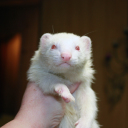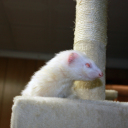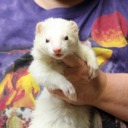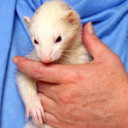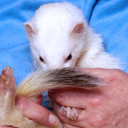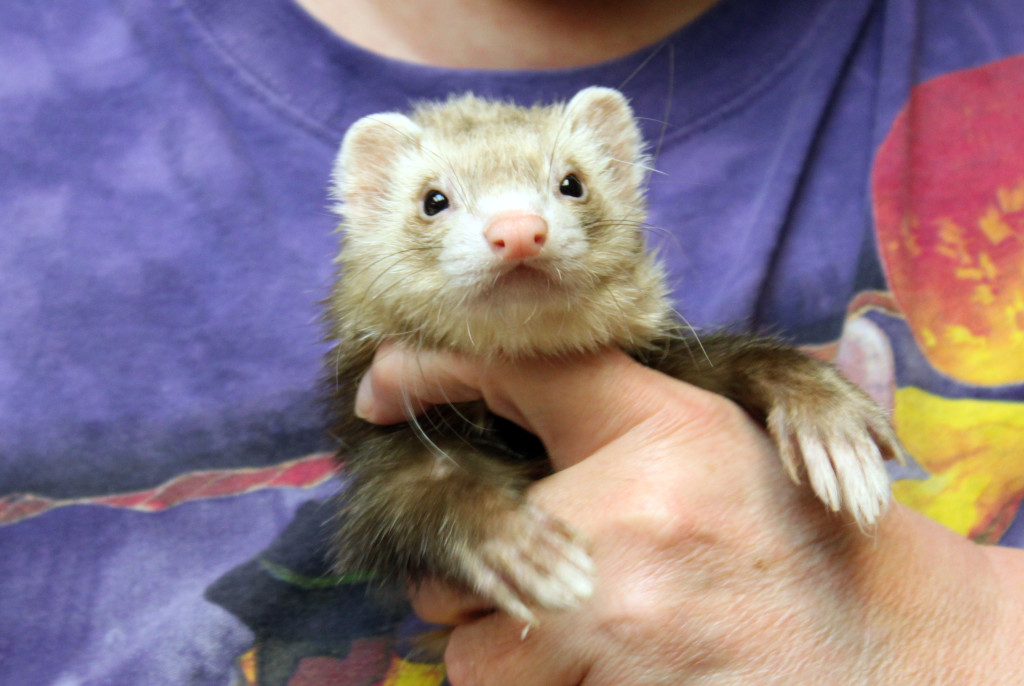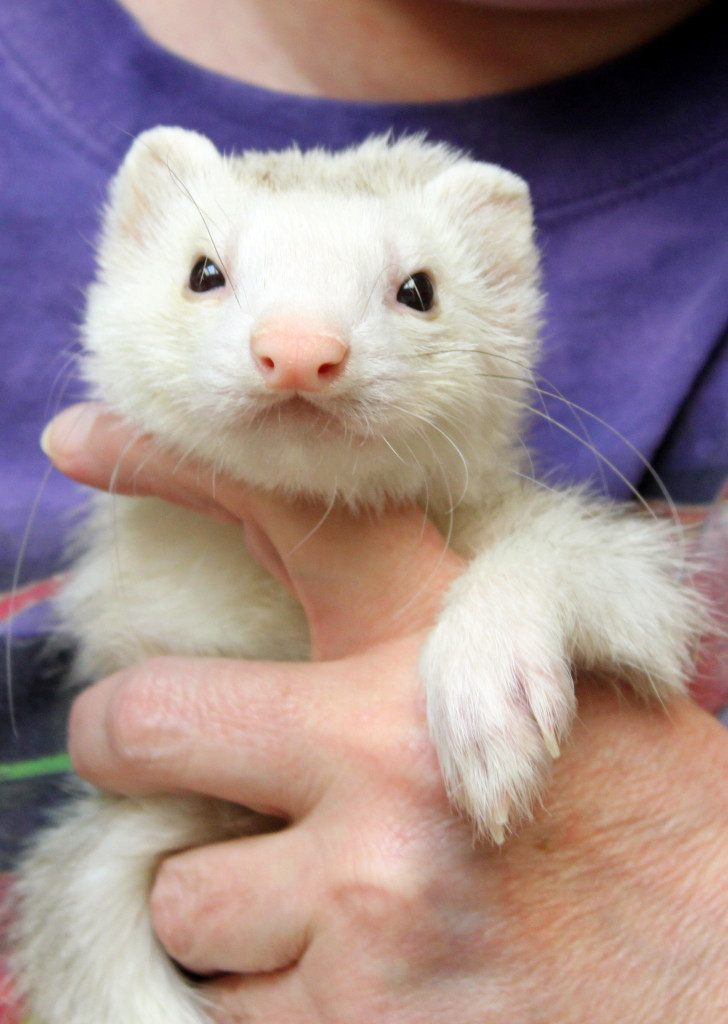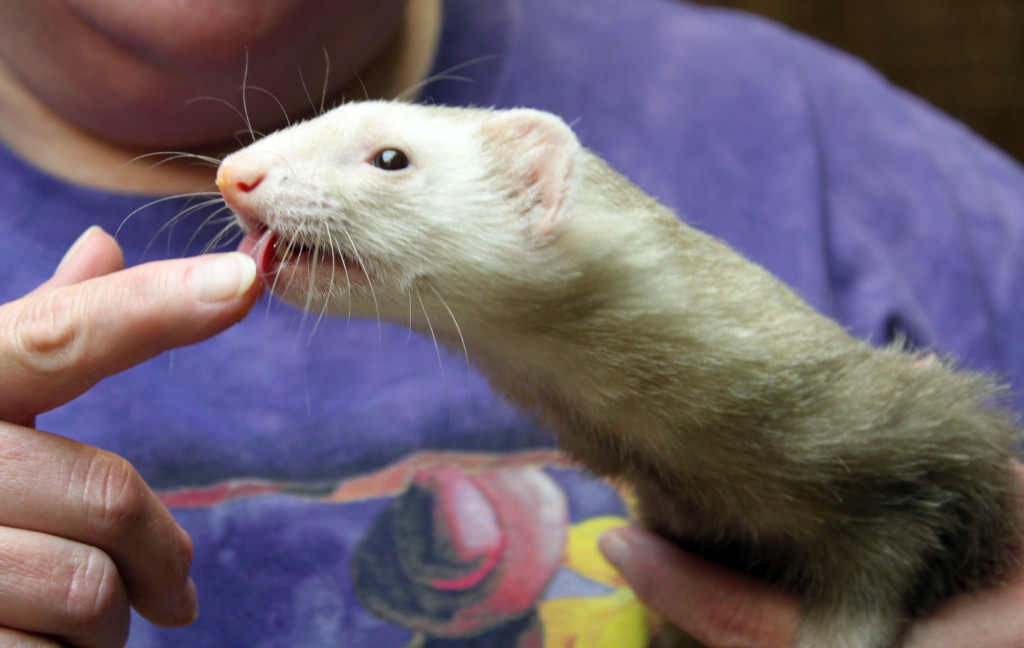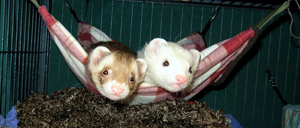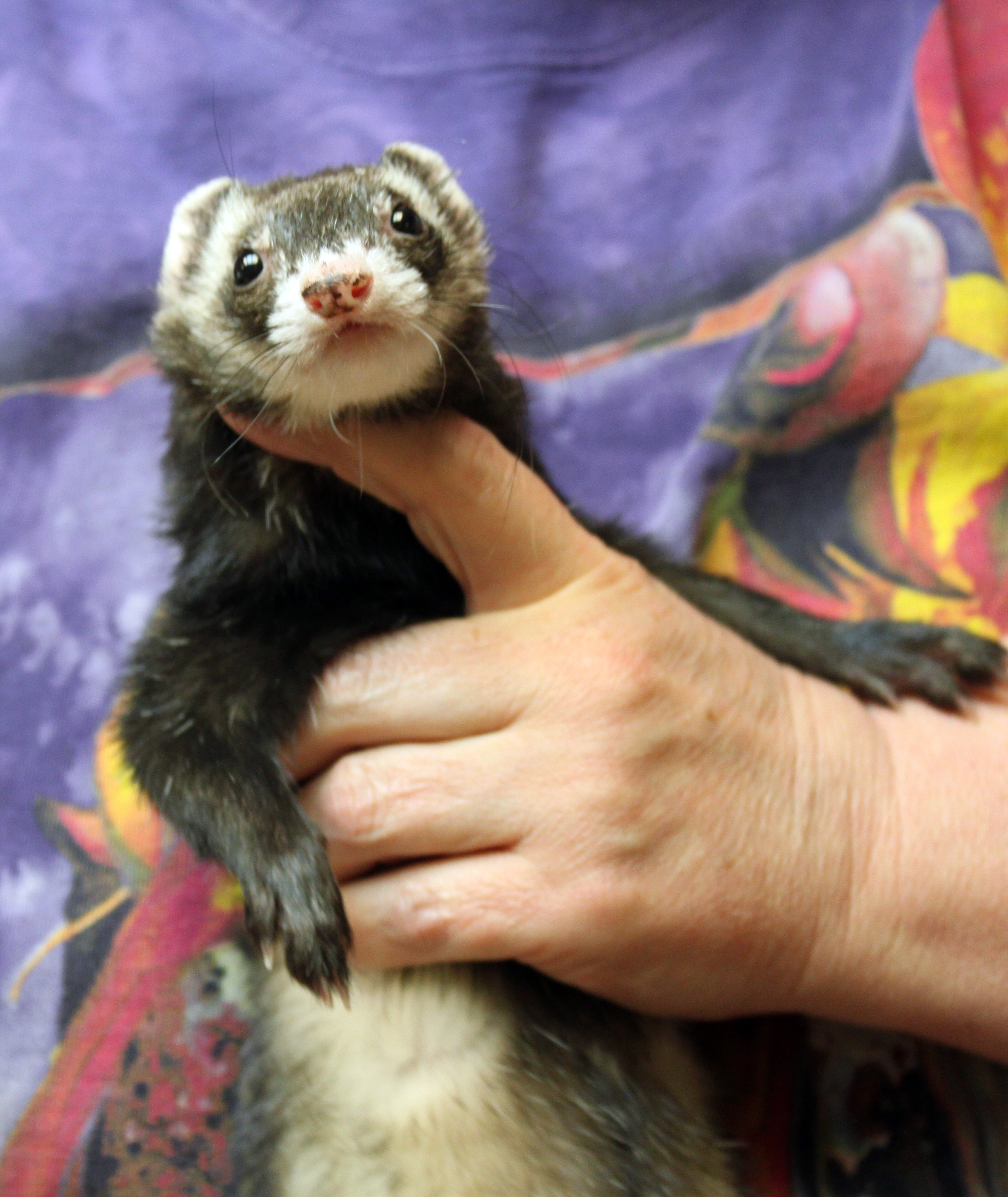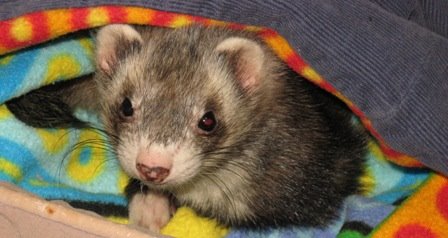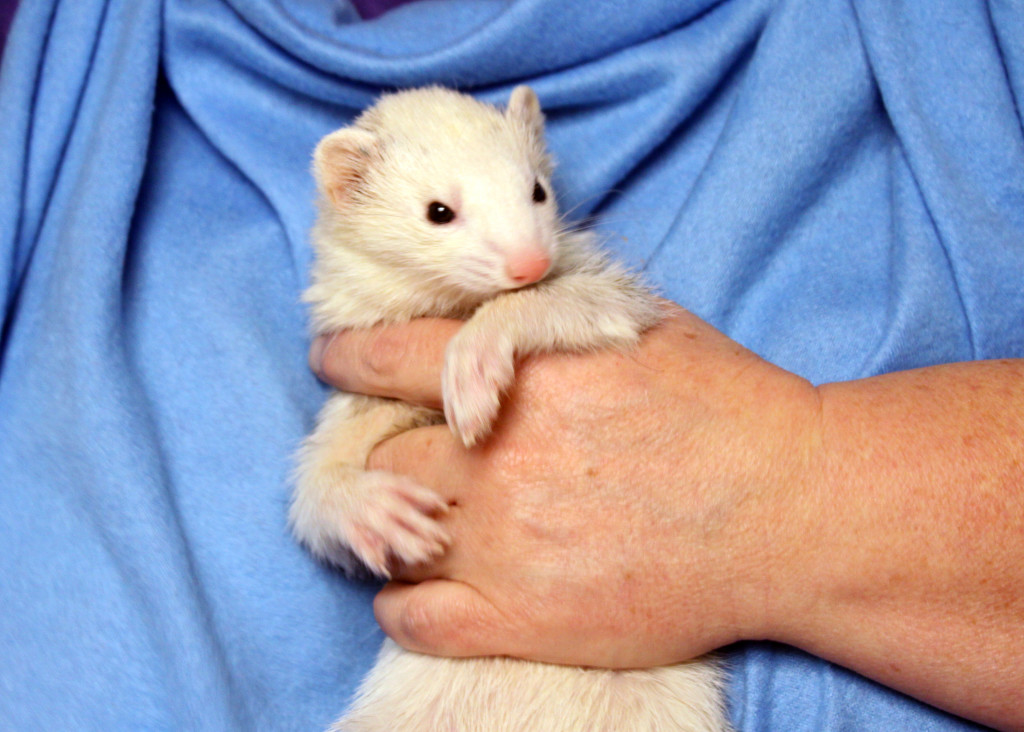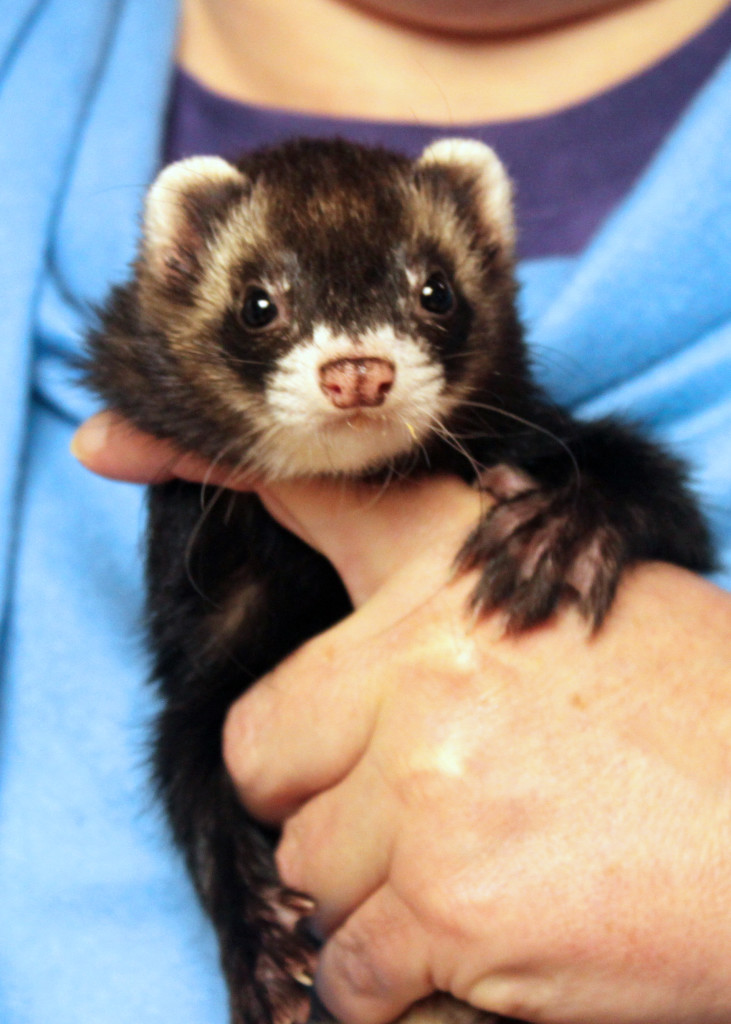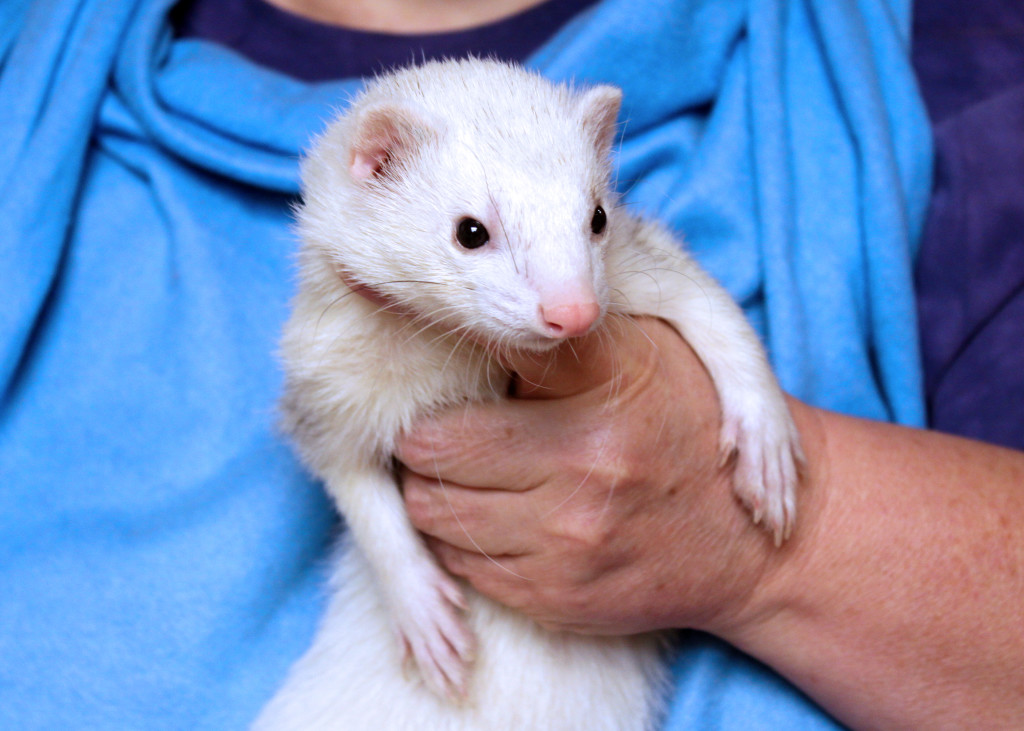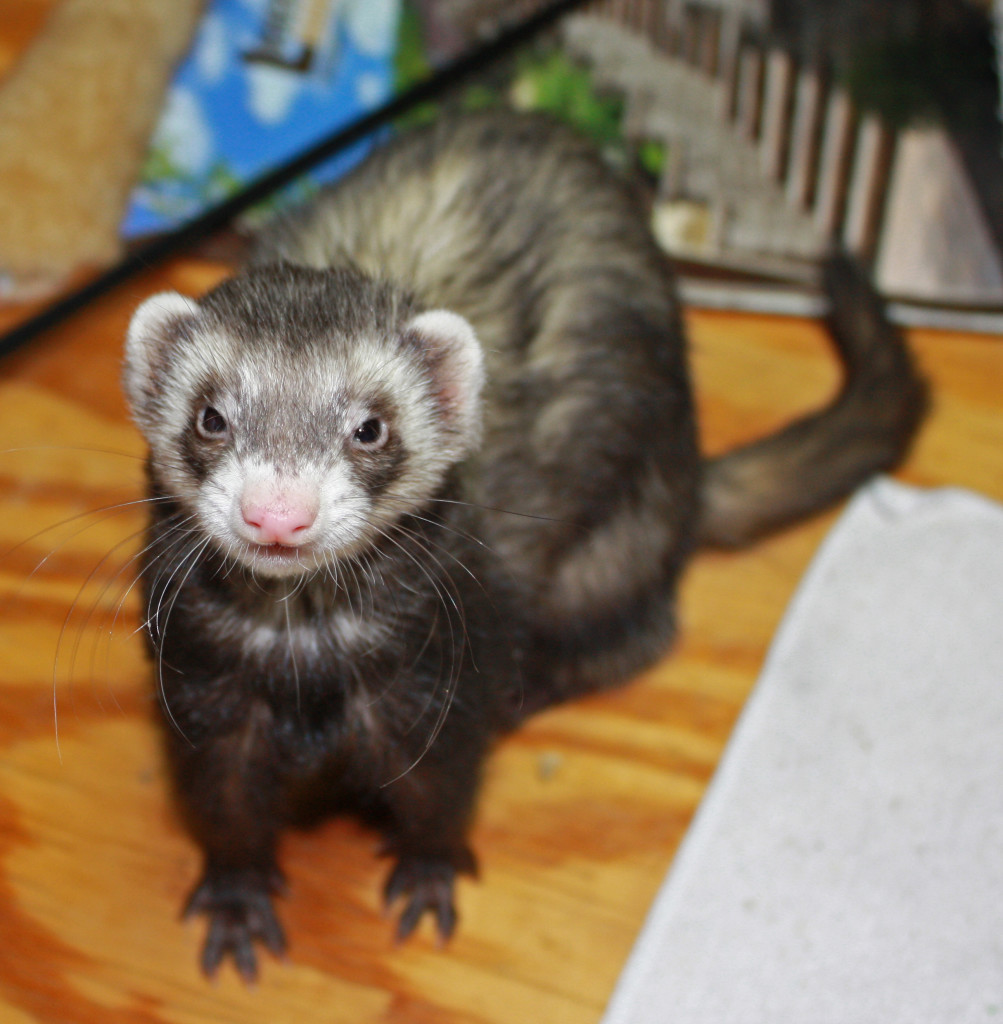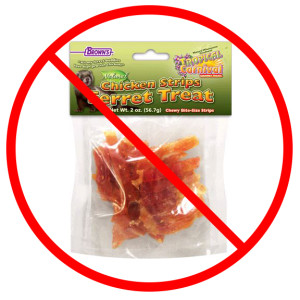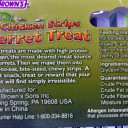This question was posed on a Facebook group and this is my (rather long-winded) reply.
What can I do for my ferret with insulinoma? Our old guy was diagnosed a few months back and for the last few weeks has had diarrhea. The vet thinks it’s a GI infection (he’s been on two different rounds of antibiotics) but he just had a seizure again like he did before he was diagnosed. I believe he’s going to need his dose increased or that the compounded med some how separated out and he’s not getting the correct dose. What have all of you done to get a ferret to take in food if he’s not wanting to? He’ll eat when his sugar gets up but right now he won’t even eat a bandit. And he dislikes duk soup and nupro supplements. Any advice would be greatly recommended as we can’t afford to keep taking him to the vet with me being unemployed (applying for postdocs right now).
Answer:
I make my own version of “duck soup” — a chicken goo made from cooking chicken legs and thighs in the slow cooker (or pressure cooker) until the bones crumble, then blending it up. It’s basically like chicken babyfood but with all the meat, fat, gristle, bones, marrow, etc. included. With all that included, it’s much more balanced than just using baby food meat (which only contains meat).
What I do depends on how old the ferret is and how far along he is with the insulinoma.
First, unless the ferret is crashing, you want to avoid anything with carbs or sugar. That’s because the sugar will momentarily raise the blood sugar but will trigger a release of MORE insulin, and the ferret is very likely to crash afterwards. That’s also why the ferret should be fed a food with little or no carbs (grains are carbs). Bandit treats and most of the less expensive cat foods have way too many carbs and should not be fed to a ferret with insulinoma.
If the ferret is crashing, you give them something sweet (as much as they want) and then immediately give them a high protein meal (like the chicken goo I mentioned or chicken or turkey baby food or Carnivore Care or canned A/D from the vet). I’ve also found that giving extra fluids helps even things out. If the ferret is crashing badly, I give fluids with dextrose under the skin (IV fluids) and that helps bring them out much faster. Again, a high protein meal is crucial.
The rest of the time, I feed them a super high quality dry food (no grains, high fat, high protein, low carbs) and the chicken goo. If you can get them completely off any carbs at all (ferrets do not need carbs like we do) they will usually do better.
Ferretone does not have sugar in it but Ferretvite and many other pastes, do. Hairball remedy has sugar in it. Look for things like raisin juice listed on the pet food. N-Bones and Bandits have a lot of carbs, so basically you usually have to cut out treats. The chew toys called Cheweasels (and maybe Marshall Chews but I’m not sure) are made from gelatin which is just protein.
If a ferret has low blood sugar, it won’t be hungry or thirsty. They are often nauseous and sometimes will paw at their mouth, drool, etc. If a ferret is having a seizure and isn’t able to swallow DO NOT try to make them drink anything or they can drown. You can, however, rub honey (or anything else sweet) on the gums and it will be absorbed through the mucous membranes. You have to *keep* rubbing it on the gums about every 5 minutes. If you have fluids with dextrose, giving 35cc of those fluids under the skin (sub-q) will help. If the ferret seizes for too long, it can suffer brain damage and you won’t be able to bring them back.
The first line of treatment besides removing all carbs from the diet is prednisone or prednisolone. The second one works better in older ferrets because it bypasses the liver and old ferrets (just like old people) often have liver issues. The typical starting dose is 0.25mg twice a day. For a ferret just diagnosed with insulinoma, that usually helps immensely. Pred will make them hungry and thirsty, so it helps both with eating throughout the day AND with keeping the fluids up. As the disease progresses, you have to gradually increase the pred. It’s important to give the doses as close to 12 hours apart as you can. Pred only stays in the system for a certain number of hours, and when it wears off, the ferret can crash from low blood sugar. In some cases, people find that dividing the day’s dose into three doses works better to help keep the blood sugar even.
Some vets who don’t know ferrets well are reluctant to give pred or will tell you to give it once a day. A high dose once a day is nowhere near as good as two (or three) doses. According to my vet, 1mg twice a day is the maximum effective dosage for insulinoma (they go higher for cancers like lymphoma).
One thing to consider is that pred is very hard on the stomach and can cause ulcers. When I give pred I usually hide it in the chicken goo (I warm it, and add a little water to make it a thick broth). Once a ferret likes the soupies, they will take almost any med in soup (except Flagyl). If your ferret is not eating on its own, you MUST force him to eat. The chicken babyfood is a good short term option, especially if he’s eating some dry food, too. It’s not nutritionally complete and shouldn’t be used exclusively for more than a few weeks. Most ferrets will start eating their dry food when they feel better.
If you are feeding the babyfood, a ferret needs to eat AT LEAST one whole jar a day. That’s the meat, not the stuff with noodles or vegetables. That’s 60cc (a Gerber babyfood jar filled to the very top is 60cc) a day to maintain their weight. If they need to gain weight, more is better.
If the ferret is resistant, you can scruff them and using a syringe, give them 10cc (cc=ml) of soupies, give the pred, and give 10 more of the soup. A ferret’s stomach can hold 20cc easily. If they are *willing* to eat more that’s fine but if you have to scruff and dribble it into the front of their mouth, then you can give them a break at 20cc. Obviously you need to feed them frequently if they will only take 20cc (or if they really really fight, 10cc) at a time. You want the day’s food to equal 60-90cc. More is okay unless they turn into a butterball.




